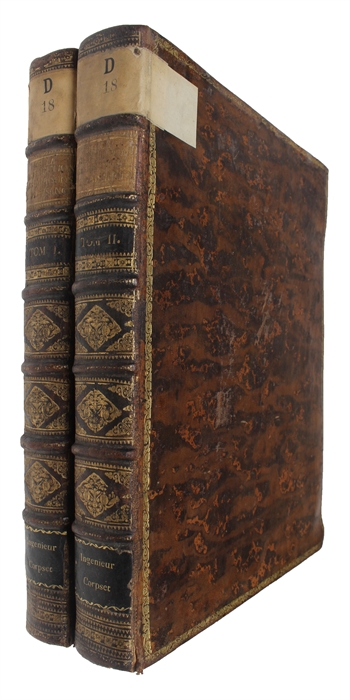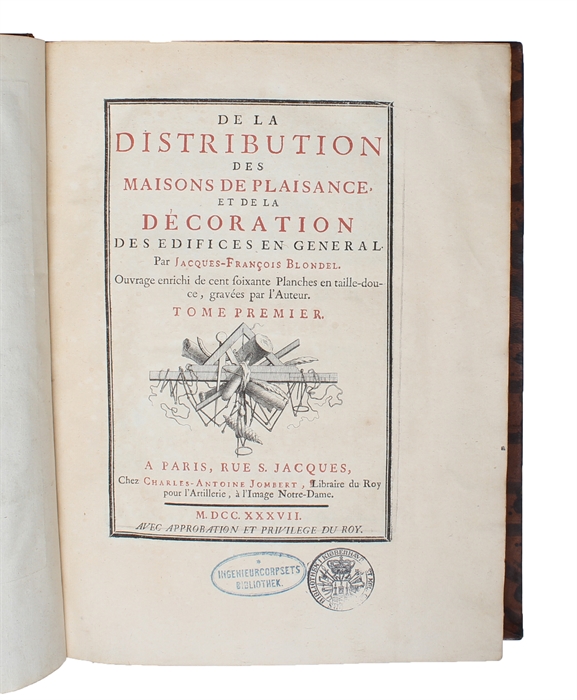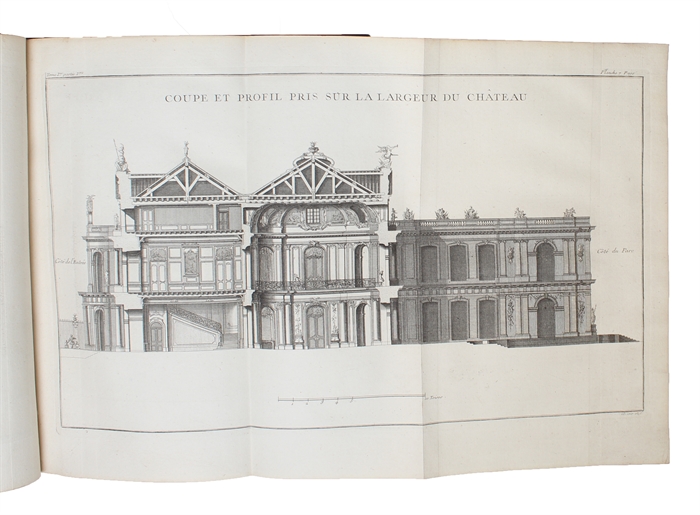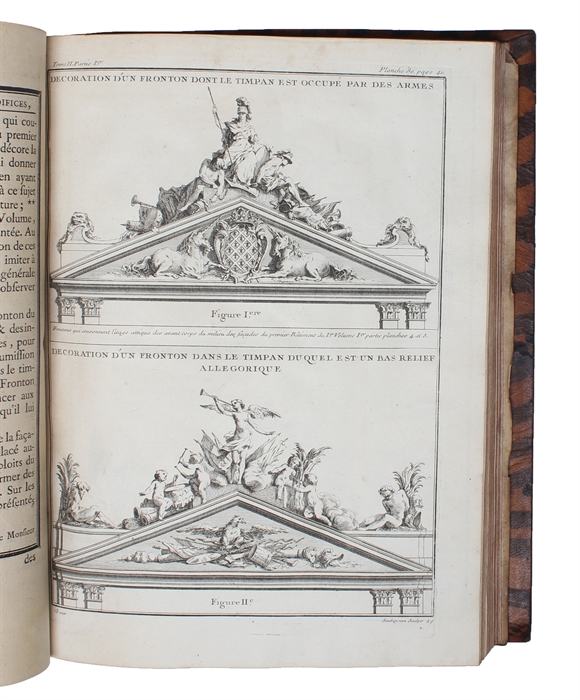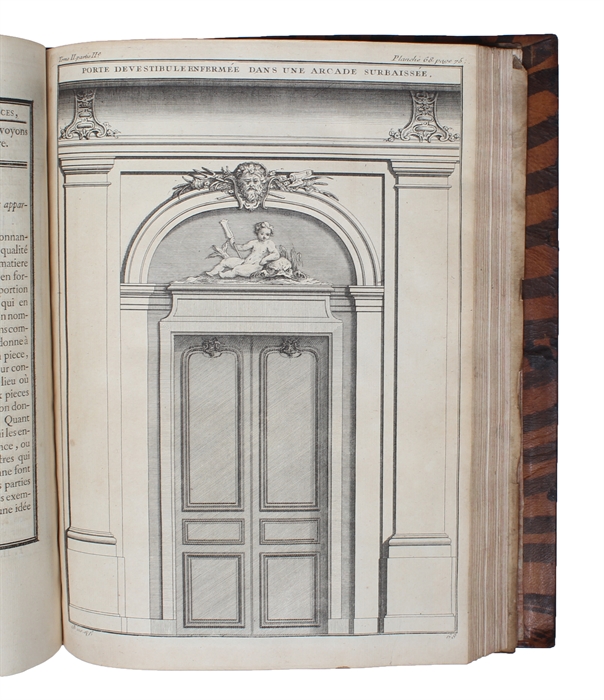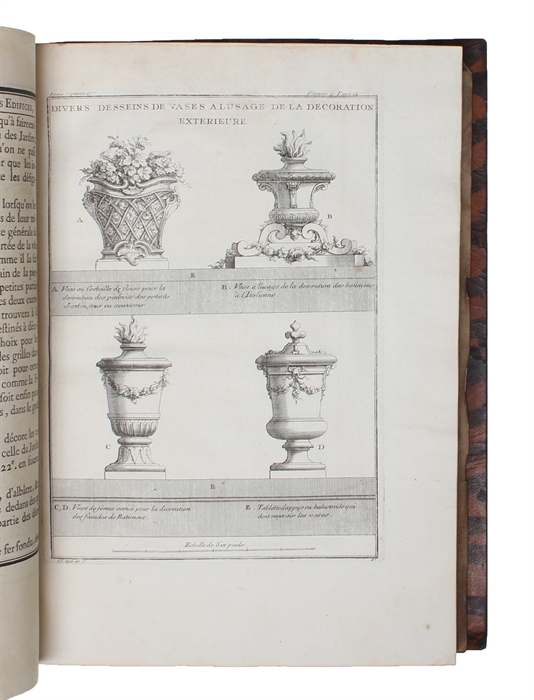BLONDEL, JACQUES-FRANCOIS.
De la Distribution des Maisons de Plaisance et de la Décoration des Edifices en general. Ouvrage enrichie de cent soixante Planches en taille-douce, gravées par l'Auteur. 2 Vols.
Paris, Charles-Antoine Jambert, 1737-38. 4to. Bound in 2 cont. full mottled calf. 6 raised bands, richly gilt spines. Titlelabels with gilt lettering. Gilt borders on covers. A paperlabel pasted on upper compartment. Stamps on foot of title-pages. Engraved frontispiece (by Cochin), title ind red/black, (6) pp. (= dedication a Monsieur Turgot), XVI,198; VII,(3) ,180,(2 - errata) pp. Volume one having 44 fine engraved plates (42 double-or triple-page, 2 single-page) and 9 engraved head- and tail-pieces. Volume two having 108 fine engraved plates (numb. 1-98, nos. 23, 24, 99 lacks, no 25 omitted and 13 with double- or triple numbering) and 3 head- and tail-pieces. Most of the plates drawn and engraved by Blondel. All text-pages printed within a borderline. Light toning to inner margins in volume one.On good thick paper, fresh and clean.
First edition, first issue (errata leaf and "Rue St. Jacques" for the printer on title) of Blondel's main architectural work, his monumental four-volume encyclopaedia of French buildings, which also constitutes his first work. The work is one of the most influential architectural treatises of the eighteenth century, as well as being one of the most comprehensive, beautiful and celebrated architectural works of the Rococco-period.
Jacques-François Blondel (1705-74) is considered the most significant French architectural educator of the eighteenth century. After having produced his first work, the seminal "De la Distribution..." at the age of 33, Blodel was so admired that he was asked to produce engravings for the festival book commemorating the celebration of the wedding of Madame Elizabeth of France to Dom Philippe of Spain. In 1740 he opened the "Ecole des Arts" with his architectural courses and became one of the earliest founders of schools of architecture in France, for which he was distinguished by the French Academy. Both through these couses and his works, he greatly influenced many later architects, such as Brongniart, Chalgrin, Desprez, Rondelet, as well as many other Europeans, who took Neoclassicism back with them from Paris. In 1755 he was inducted into the Académie Archtecture and he was appointed architect to Louis XV. He also contributed to the great Éncyclopédie of Diderot and d'Alembert.
The first volume of his main work deals with the design of houses, the second with exterior ornamentation and interior designs and lay-out of gardens.
Brunet I:977; Cohen-Ricci: 156-57.
Order-nr.: 54864

